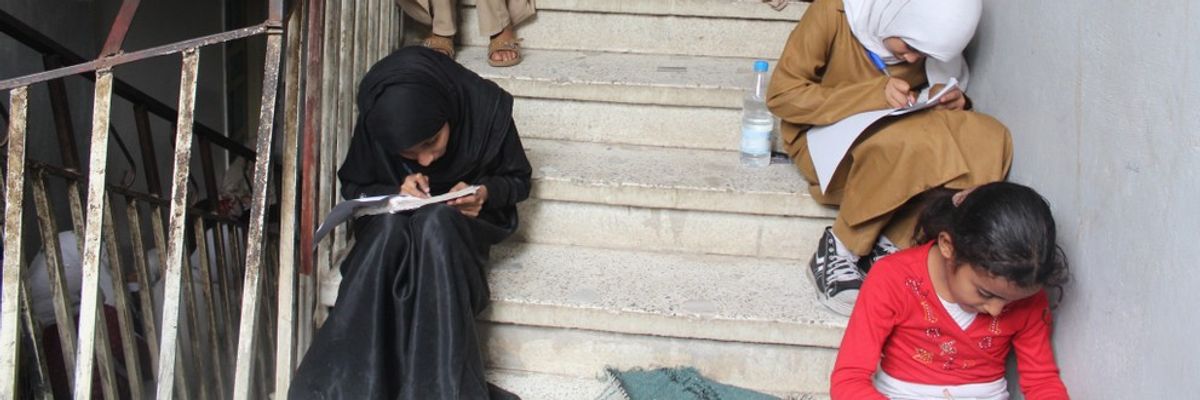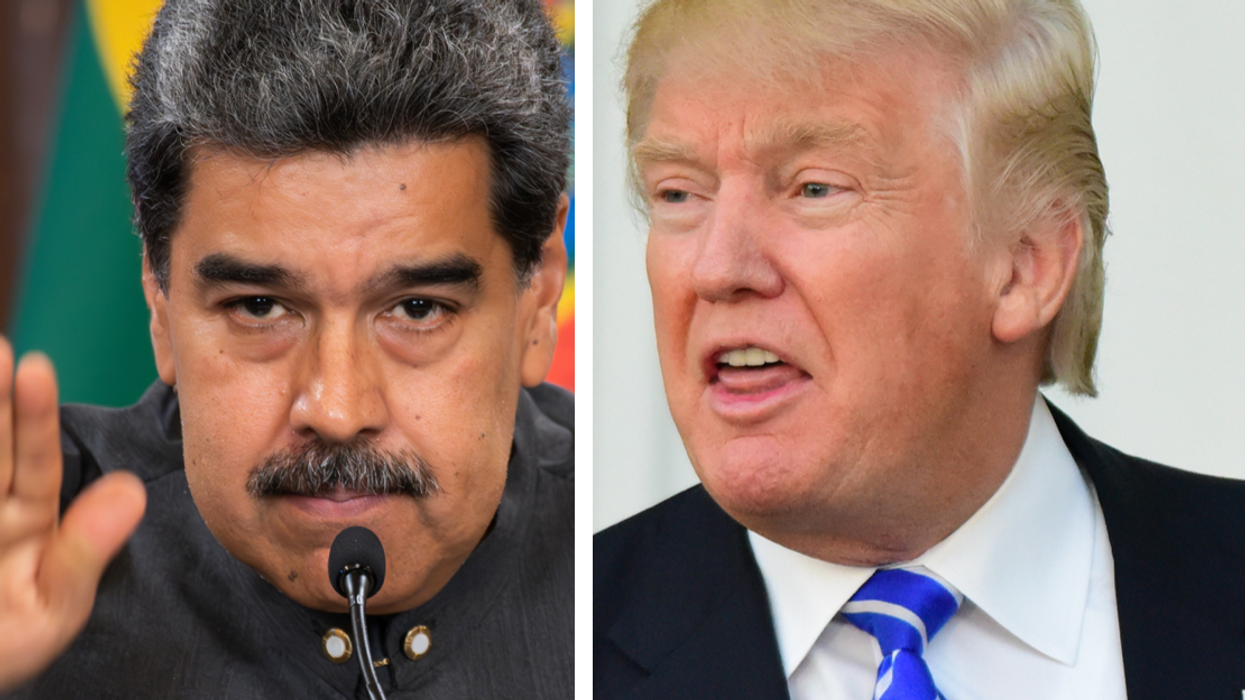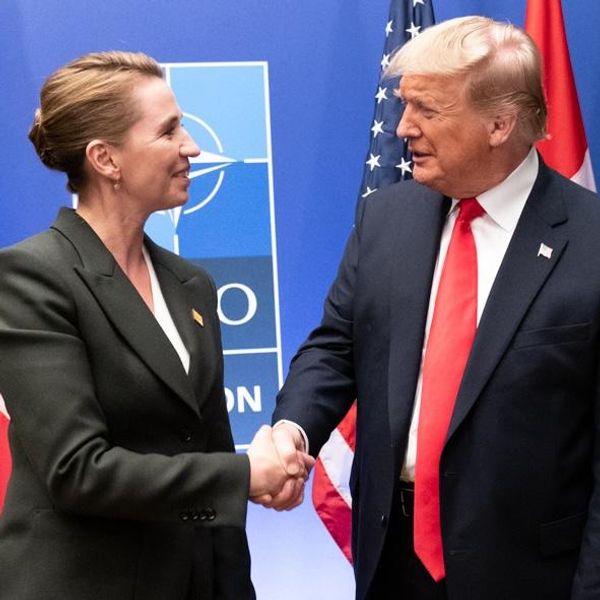In April 2022, the rebel Houthi movement — which controls most of Western Yemen — and the Saudi-led coalition that supports the internationally recognized government of Yemen reached a truce agreement. As a result of the agreement, which has been renewed twice since, Yemen has experienced a period of comparatively limited conflict.
However, truce violations are numerous. The Houthis have been responsible for the majority of the violent events in contravention of the truce. Meanwhile, the Saudi-led coalition has eased the blockade of Yemen but the number of fuel ships allowed to reach the Red Sea port of Hodeida is still below what the UN considers sufficient "to support essential services."
Even more worrying than the truce violations is the difficulty to imagine how the current reduction in fighting between the Houthis and the Saudi-led coalition can finally evolve into a durable peace. Saudi-Houthi talks facilitated by Oman appear to be making little progress. Furthermore, in case these contacts were to lead to a significant agreement, a multiplicity of actors — ranging from the Southern Transitional Council (STC) to Al-Qaeda in the Arabian Peninsula (AQAP) — could still derail a peace process.
Helen Lackner, a Research Associate at SOAS University of London and expert on Yemen, where she lived for more than fifteen years, presents in her latest book, Yemen: Poverty and Conflict, a succinct, 184-page account of Yemen’s modern history. Although the volume is conceived as an introductory work, Lackner offers analytical insights that will benefit readers who are already familiar with Yemen’s story.
The author describes how a single state structure was not established in Northern Yemen until the reigns of Imam Yahya and his son Ahmad in the mid-twentieth century. The traditional structure of the Imamate in the North was replaced by the Yemen Arab Republic, founded in 1962. In the South, the People’s Democratic Republic of Yemen emerged in 1967 after the end of the British colonial presence. The jubilation of Yemenis upon the unification of the country in 1990, explains Lackner, would only be matched by the broad enthusiasm for change that eventually led to the downfall of Yemen’s President Ali Abdullah Saleh in 2011 in the context of the Arab Spring.
The new Republic of Yemen established in 1990 was dominated by a group of Northern elites with Saleh — who had already been the leader of the Yemen Arab Republic since 1978 — at the state’s helm. In her analysis of Yemen’s economic situation during the two decades after unification, Lackner argues that the neoliberal direction of the new government “contributed to a gradual serious deterioration of living standards.” The World Bank and the IMF contributed to this trajectory, explains the author, but, within Yemen, there was also the widespread perception that the public sector was deeply corrupt.
During the 2000s, Saleh proved skillful at exploiting the Bush administration’s focus on the so-called “War on Terror” to secure weapons and equipment for his elite military units. Saleh presented himself to Washington as an anchor of stability that would prevent the growth of jihadism in Yemen after the bombing of the USS Cole by Al-Qaeda off Aden’s coasts in 2000 and the 9/11 attacks the following year.
Saleh’s machinations furthered an already existing problem: the world too frequently sees Yemen through a securitized and simplistic lens. As Lackner remarks, “Yemen is often mentioned as a hotbed of terrorism and the ancestral homeland of the most notorious jihadi, Usama bin Laden.”
This helps explain why, as the author ruefully observes, most of the “aid” Yemen traditionally received from the major world powers was focused on “security” and counterterrorism instead of the country’s very serious socioeconomic and environmental problems. As a result, “most support actually, if indirectly, contributed to the country’s instability and worsening poverty.”
The current conflict has only cemented these perceptions. Yemen was receiving small volumes of development aid in comparison with similarly poor countries before the civil war broke out in 2014. By now, humanitarian assistance has almost completely eclipsed any form of development aid. While humanitarian aid is crucial in saving lives, Lackner notes, “it is only through development funding that individuals, households and communities can liberate themselves from dependence and gradually recover their self-sufficiency.”
Moreover, even the humanitarian response to the Yemen crisis has been severely underfunded. In the March 2022 Yemen Pledging Conference, world leaders pledged only 30 percent of the total funds needed to avert a further deterioration in the country’s already desperate humanitarian situation, often described by the United Nations as the “world’s worst.” In the preceding years, the volume of funds for Yemen had already decreased.
Lackner’s Yemen: Poverty and Conflict presents a useful description of Yemen’s international relations and the road to the current war. Nevertheless, her analytical skills are probably at their sharpest when she details the reasons why the war has continued to the present day, as well as in her presentation of the environmental challenges Yemen faces.
Regarding the first aspect, Lackner describes how a “new class of war profiteers on all sides” has vested interests in the conflict’s persistence. At the same time, traditional sources of income for young men have dried up, leaving enrollment in different armed groups as one of the few options to secure a salary. The international dimension is also essential to understanding the war’s continuation.
European countries have provided weapons and diplomatic support to the Saudi-led coalition while the United States has gone beyond this by assisting the coalition’s airstrikes in Yemen that have resulted in the death of at least 3,820 civilians and the injury of a further 3,000 according to the NGO Mwatana for Human Rights. Parallel to this, Iran has stepped up its limited weapons transfers to the Houthis in the course of the war.
As to the environmental crisis, Lackner — who has paid much-needed attention to the topic in her research over the years — argues that “water management is by far the country’s major long-term problem, threatening its very existence.” During the last decades, irrigated agriculture has become widespread in Yemen, and this has resulted in the depletion of water tables, especially in Western Yemen where most of the population lives. The author suggests “improving rain-fed subsistence and cash-crop potential” as a possible way forward, but, as she notes, water management is not simply a technical issue but depends on politics.
Other experts have proposed the introduction of new plant varieties and the revitalization of rain-fed terraces that have not been properly maintained. These changes would leave Yemen in a better situation to deal with the increasing frequency of extreme weather events due to climate change. Last month, mass flooding left 38 people dead across Yemen.
Post-war Yemen will undoubtedly require significant reforms to give peace a chance. What is far less clear is which structures of power will dominate the country in the war’s aftermath. As Lackner explains, “there is no certainty that there will be a single Yemeni state by the time this conflict ends.” If there is a weakness of Yemen: Poverty and Conflict, it probably lies in the limited attention paid to social and cultural dynamics. For those who want to know more about Yemen’s cultural sphere and global interactions, Laurent Bonnefoy’s Yemen and the World: Beyond Insecurity is highly recommended.
Even so, the title of Lackner’s book does not do justice to the volume. As this review has shown, the reader will find that poverty and conflict are only some of the topics the book addresses. Overall, this is a commendable piece of scholarship by one of the most seasoned analysts of modern Yemen.
















